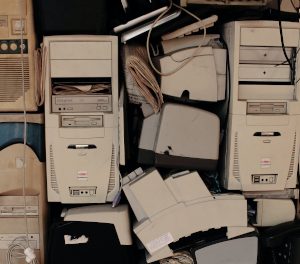Apple is making good progress in its sustainability pledges. Unlike many other tech companies who are stuck in theory and promises, Apple is making inroads. Recently, the company announced that it is improving the repairability of some of its devices, by making available genuine Apple parts for select iPhone models. The initiative will be rolled out after summer 2024. Now for those of you who may not be aware, making electronic devices easily repairable has been the subject of a lot of debate and the practice is increasingly being regulated, with lawmakers in many states requiring OEMs or manufacturers to facilitate repairability. Manufacturers have been very hesitant to do so for at least two reasons (continue below the video)
- In doing so you force changes in the manufacturing process. Product designers have to go back to the drawing board, ODMs in places like Asia have to retool their sites, then you have to produce many more parts to accommodate the need for replacement parts, etc. I have to admit, it is a practical and logistical headache.
- The second reason for OEMs hesitation is related to their own market. If you make repairing devices easy, it allows the extension of the life of the device, it allows also the establishment of a secondary market, and that means it cannibalizes their own new product marketing and sales. In an era where devices are built to last, adding easy repairability is a double threat for tech companies. It’s a double-edged sword.
Sensing that the public and lawmakers are not sympathetic with the OEMs positions, Apple wants to be ahead of the problem and face it as quickly as possible. Apple is probably one of the best positioned firms to do so. It has a history of challenging itself and push its own boundaries. It wants to do that in the context of making some of its products easily the repairable and the keywords here are “some of its products.” That’s because for now, this initiative has limited initial scope since the program starts with select iPhone models, potentially excluding other devices for now. But the company pledged to extend it to dozens of its products.
So what’s in the program? In its announcement, Apple says the new process includes on-device calibration for parts, support for biometric sensors, and the extension of the Activation Lock feature to iPhone parts. Apple will also update its Parts and Service History feature to indicate whether a part is new or used. Of course we should applaud Apple for this, in particular since this is not just an effort to appease advocates of repairability in the US. A Self Service Repair program will be launched in 33 countries.
On the 26th of June, the software that powers Apple Diagnostics for Self Service Repair and helps identify problems with Apple systems, was made available in 32 European countries, following its debut in the US in December 2023. As such, the Apple Diagnostics for Self Service Repair can now be used on iPhone, Mac, and Studio Display models in 33 countries, with Canada expected to be the 34th country next year.
However, there are still many lingering questions. One of them is about users and repair providers likely to be dependent on Apple to provide the so-called genuine Apple parts. This would create new dependency on Apple, which is part of Apple’s business philosophy. That company does not like to share its market, its technology, its opportunities with others. It’s a philosophy that was perfected by its founder, Stever Jobs. And in creating this dependency, there is a risk that the program may be more expensive than third-party alternatives.
The is the potential for complexity for inexperienced users. After all, this is a self-service repair initiative that could cause inexperienced users to fail.
There are also risks, such as a calibration process or Activation Lock feature is bypassed, thereby compromising user security.
Although there are many more risks and challenges, it is refreshing to see that Apple is tackling this problem head on and any step that enhances sustainability is always a good step.





